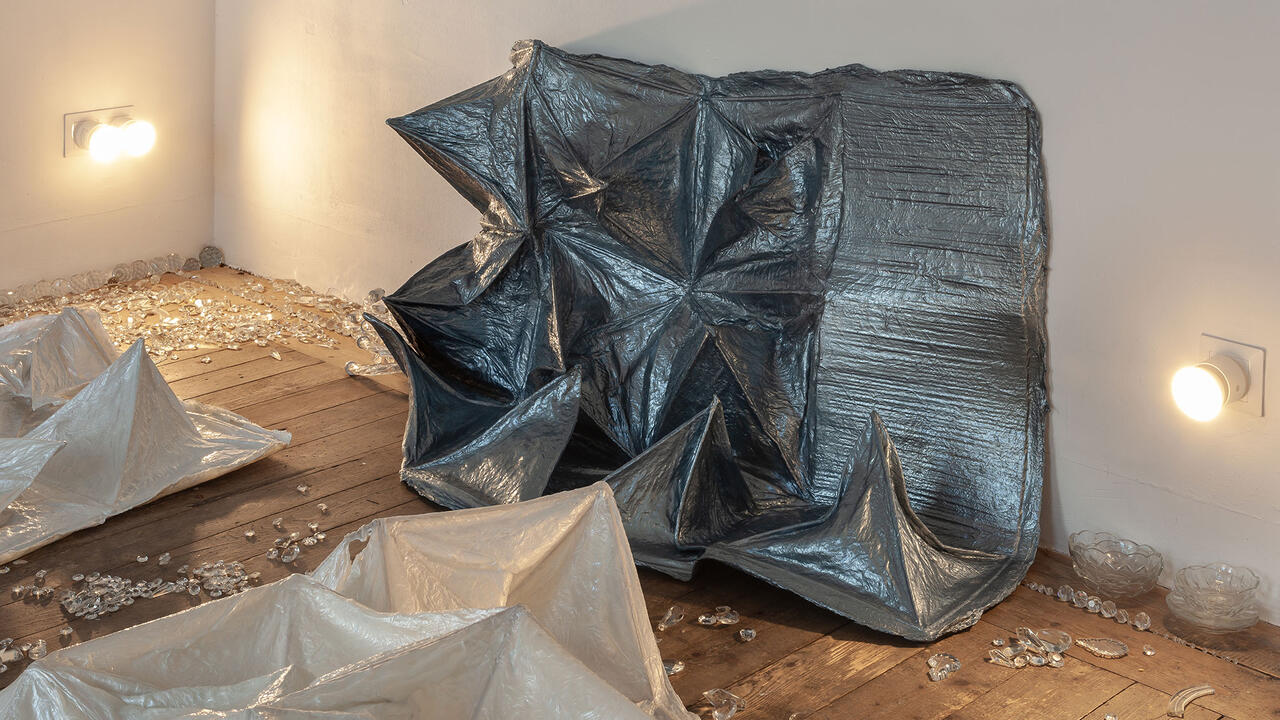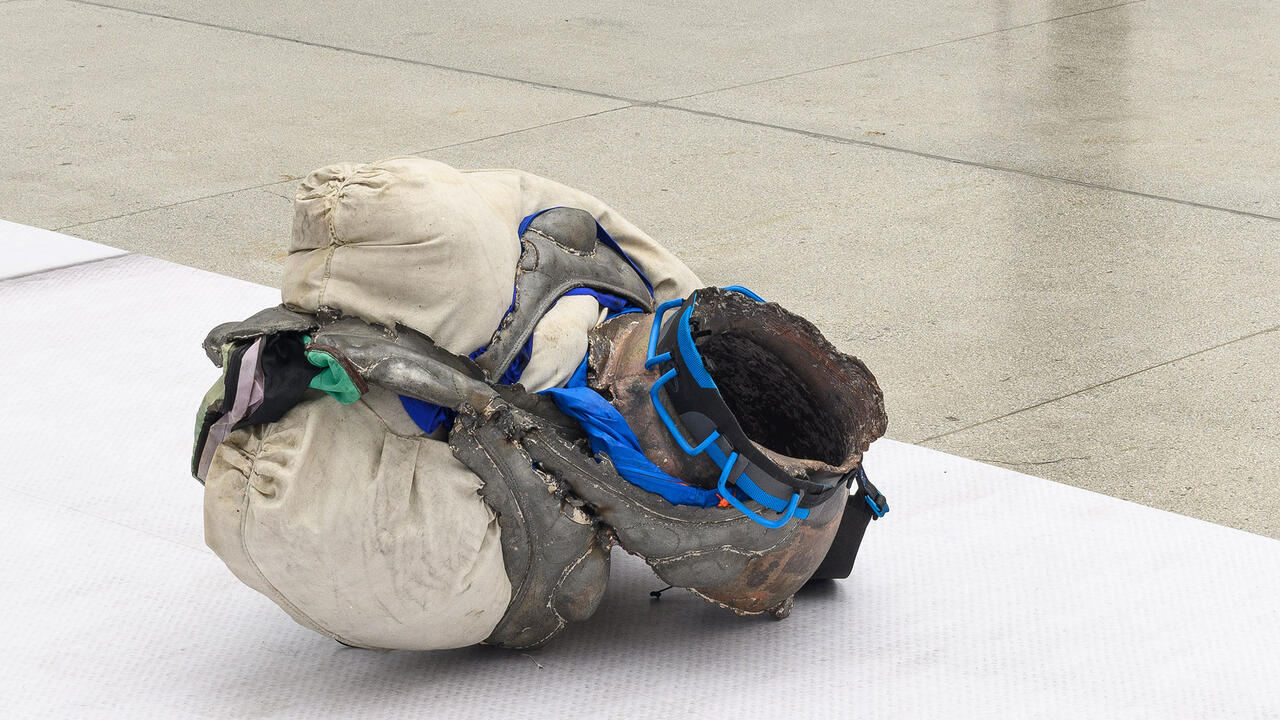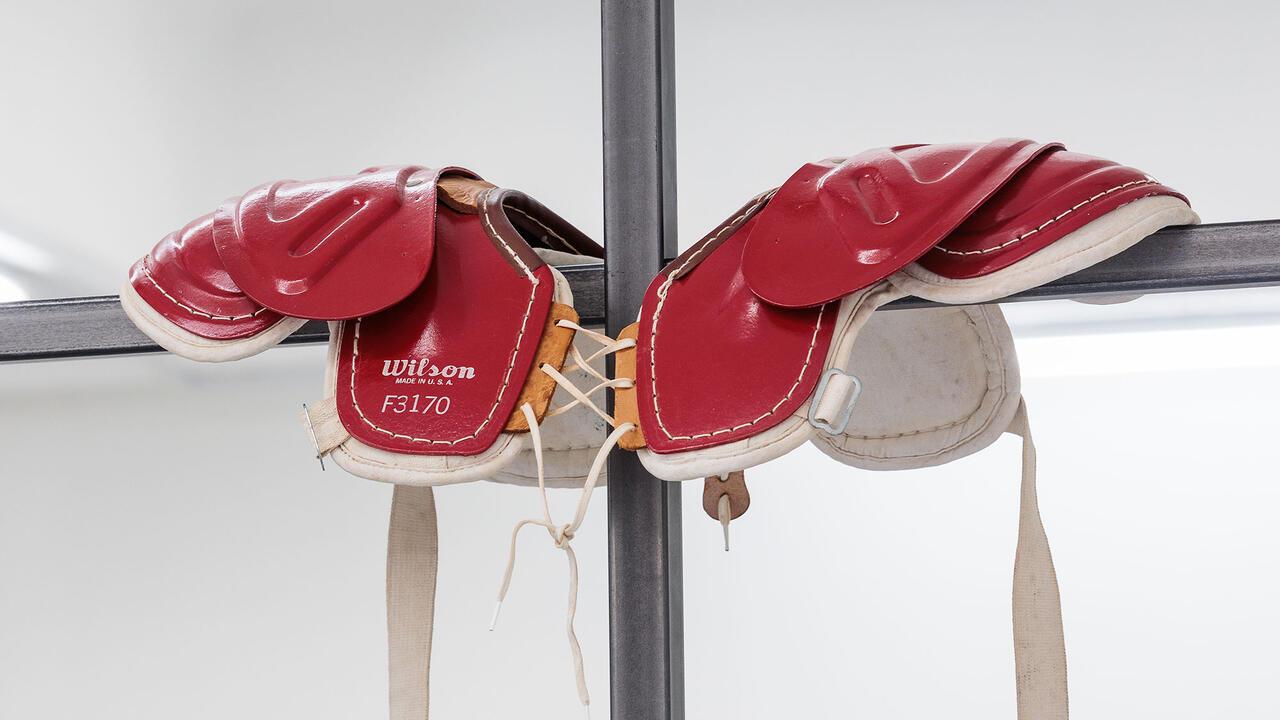Olga Balema, Marlie Mul, Iza Tarasewicz
Croy Nielsen, Vienna, Austria
Croy Nielsen, Vienna, Austria

In the late 1860s, the industrialist and art patron Nikolaus Dumba raised the bar for interior opulence by commissioning painters Gustav Klimt and Hans Makart to decorate his family’s palace on Vienna’s Parkring, a glitzy stretch of the city’s inner ring road. Once filled with allegorical frescoes of frolicking cupids and extravagant accents in gold and Carrara marble, the Palais Dumba today retains little evidence of its former nouveau-riche splendour. The building now houses a business institute, an Australian-themed sports bar and, as of November 2016, the new space of Croy Nielsen, a gallery previously based in Berlin.
For Croy Nielsen’s second show since moving to Vienna, artists Olga Balema, Marlie Mul and Iza Tarasewicz together played against the rigid grandeur of the space, infusing the gallery – once the bel-étage apartment, all soaring white walls and parquet floors – with a soft, slumping interior architecture that spreads throughout its three interconnected rooms. The space was carved into new territories by Tarasewicz’s Arena II (2016), a 70-metre-long rope of silicone-coated handmade hemp fibre suspended from the ceiling by hooks and wires – a flexible support system that allows the piece to be adapted for each installation. In this hanging, the rope coils alone in the modest entry room before swooping through the main gallery space, where it curlicues through the air like a hastily scribbled signature stretched into three dimensions. Mingling natural and artificial materials, the rope’s waxy, scab-like texture suggests something vaguely corporeal, and slightly ghastly, as if one’s intestines (or worse) had been spooled out and festooned around the room.

These bodily associations find echoes in Balema’s Interior Biomorphic Attachment (5) (2014), a sculpture slung low across the wall in the main room. Hovering just above the floorboards, the piece consists of a swathe of Polyfoam folded over a metal frame, then shellacked with latex. If the coral-coloured coating strikes the eye as whimsical or just plain sticky – resembling a protruding tongue or pulled taffy – the matte finish of the latex on foam suggests plaster or concrete, in a play of hard and soft surfaces. The artist makes no effort to conceal the cruder aspects of the sculpture’s construction, positioning the object as a product of an essential tension between its materials.
In the third and final room, Balema’s Interior Biomorphic Attachment (2016) could almost echo one of the decorative flourishes of the old Palais Dumba. Made from the same foam, steel and latex as the first Attachment, this piece masks the particulars of its construction. A seamless white ‘S’, it registers more like an architectural intervention than an autonomous object, scrolling down the wall as if the surface of the space’s interior were itself peeling off. The sculpture is flanked by two of Mul’s comically enlarged series of ‘Hammers’ (2016). Appealingly crafted out of silicone in Lisa Frank shades of hot pink and turquoise, the hammers look like oversized novelty erasers. While slightly smaller in scale, each object apparently weighs about the same as a human body. The turquoise Hammer lies listlessly in the centre of the floor, while its hot-pink counterpart slouches against the wall.

Together, the three bodies of work introduce a fresh splendour into the space. The luxury here is no longer in gilded accents or extravagant wainscoting; rather, it lies in the simple, sumptuous materials, which inflect their interior with an anthropomorphic and corporeal dimension originally denied by the magnificent proportions of the Palais Dumba. It is as if, after years of remaining rigidly upright, the architecture has finally allowed itself a giant exhalation.






















